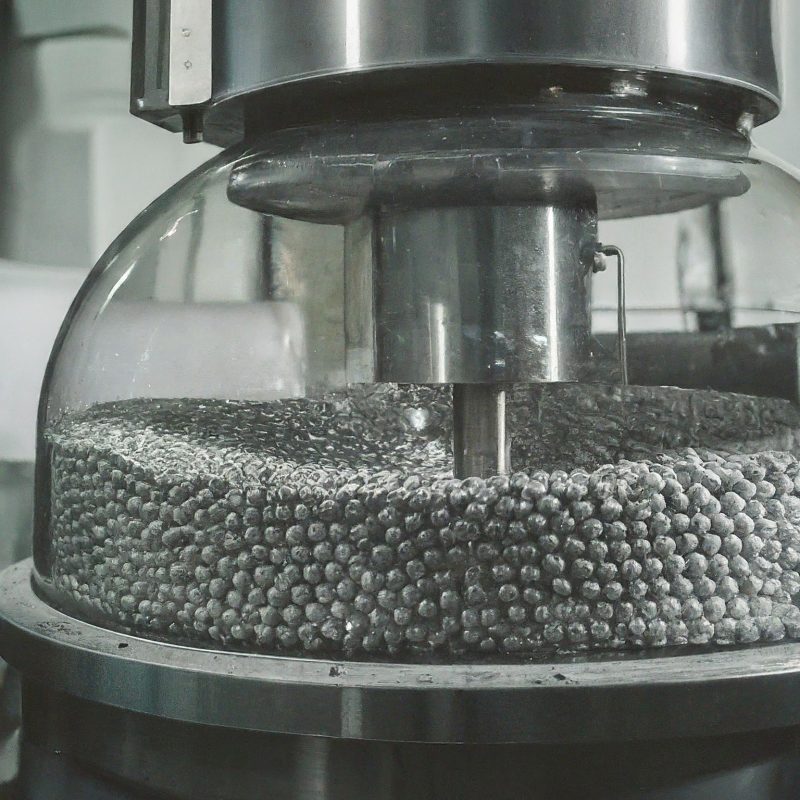A Comprehensive Guide to Purchasing a Planetary Laboratory Ball Mill in Canada
Wprowadzenie
The selection and acquisition of a planetary laboratory ball mill is a critical decision for any research or industrial facility in Canada. This equipment is instrumental in a wide range of applications, including materials science, chemistry, pharmaceuticals, and nanotechnology. A thorough understanding of the underlying principles, operational parameters, and available options is essential to make an informed purchase. This article will delve into the technical aspects of planetary ball mills, their applications, and the key factors to consider when purchasing such equipment in the Canadian market.
Understanding Planetary Ball Mills
Principles of Operation

A planetary ball mill is a high-energy milling device that utilizes centrifugal and collision forces to achieve efficient particle size reduction. The equipment consists of a central stationary disk and one or more satellite disks that rotate around the central axis while simultaneously revolving on their own axis. Grinding jars containing the material to be processed and grinding media are attached to the satellite disks. The complex motion of the grinding jars results in intense impact and attrition forces, leading to effective particle size reduction.
Key Components and Their Function
Mill Body: The main housing that encloses the grinding chamber.
Satellite Disks: Rotating disks that hold the grinding jars.
Grinding Jars: Containers for the material to be processed and grinding media.
Grinding Media: Typically made of materials like steel, tungsten carbide, or agate, used for grinding.
Drive System: Motors and gears that provide the necessary rotational speed.Factors Influencing Ball Mill Performance
Material Properties
The properties of the material to be processed significantly impact the grinding process. Factors such as hardness, toughness, particle size distribution, and moisture content influence the choice of grinding media, jar material, and milling parameters.
Grinding Media Selection

The type and size of grinding media are crucial for achieving desired particle size reduction. Common grinding media include steel, tungsten carbide, agate, and zirconia. The selection of grinding media depends on the material to be processed, desired particle size, and contamination concerns.
Milling Parameters
Optimal milling performance is achieved by carefully controlling process parameters such as:
Rotation speed: Determines the impact and attrition forces.
Milling time: Duration of the grinding process.
Ball-to-sample ratio: Influences grinding efficiency.
Atmosphere: Ambient, inert, or controlled atmospheres can be used.
Temperature control: Essential for temperature-sensitive materials.Applications of Planetary Ball Mills
Planetary ball mills have a wide range of applications across various industries:
Materials science: Synthesis of nanomaterials, alloying, and composite preparation.
Chemistry: Sample preparation, mixing, and homogenization.
Pharmaceuticals: Drug development, particle size reduction, and mixing of ingredients.
Ceramics: Grinding of ceramic materials for various applications.
Environmental science: Sample preparation for analysis.Purchasing a Planetary Ball Mill in Canada
Identifying Your Needs
Before purchasing a planetary ball mill, carefully assess your specific requirements:
Sample volume and size: Determine the capacity needed.
Material properties: Consider the hardness, toughness, and other characteristics of the material to be processed.
Desired particle size: Specify the target particle size distribution.
Grinding atmosphere: Determine if ambient or controlled atmosphere is required.
Budget: Establish a realistic budget for the equipment and accessories.Evaluating Suppliers
When selecting a supplier in Canada, consider the following factors:
Product range: Ensure the supplier offers suitable ball mills for your needs.
Technical expertise: Evaluate the supplier's knowledge and experience in ball milling technology.
After-sales support: Assess the availability of spare parts, maintenance services, and technical assistance.
Warranty and service agreements: Understand the terms and conditions of the warranty.
Pricing and payment terms: Compare prices and payment options from different suppliers.Installation and Commissioning
Proper installation and commissioning are essential for optimal performance and safety. Follow the manufacturer’s guidelines and consider seeking professional assistance if necessary.
Training and Operator Safety
Ensure that operators are adequately trained in the safe operation and maintenance of the ball mill. Adherence to safety protocols is crucial to prevent accidents and injuries.
Conclusion
Selecting and purchasing a planetary laboratory ball mill requires careful consideration of various factors. By understanding the underlying principles, evaluating your specific needs, and conducting thorough research on available options, you can make an informed decision that meets the requirements of your research or industrial processes.
Note: While this outline provides a solid foundation, incorporating specific data, calculations, and examples related to planetary ball mills would significantly enhance the article’s depth and value.
